United Kingdoms Flag United Kingdoms Flag Easy
 | |
| Name | Union Jack, Union Flag, British flag, UK flag |
|---|---|
| Use | National flag |
| Proportion | 1:2 |
| Adopted | 1 January 1801 (1801-01-01) |
| Design | A white-fimbriated symmetric red cross on a blue field with a white-fimbriated counterchanged saltire of red and white. |
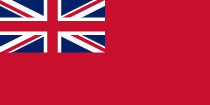 Variant flag of the United Kingdom of | |
| Use | Civil ensign |
| Proportion | 1:2 |
| Design | A red field with the Union Flag in the canton. See Red Ensign. |
 Variant flag of the United Kingdom of | |
| Use | State ensign |
| Proportion | 1:2 |
| Design | A blue field with the Union Flag in the canton. See Blue Ensign. |
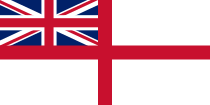 Variant flag of the United Kingdom of | |
| Use | Naval ensign |
| Proportion | 1:2 |
| Design | A symmetric red cross on a white field with the Union Flag in the canton. See White Ensign. |
 Variant flag of the United Kingdom of | |
| Use | Air force ensign |
| Proportion | 1:2 |
| Design | A field of air force blue with the Union Flag in the canton and the RAF roundel in the middle of the fly. |
The national flag of the United Kingdom is the Union Jack, also known as the Union Flag.[1]
The design of the Union Jack dates back to the Act of Union 1801 which united the Kingdom of Great Britain and the Kingdom of Ireland (previously in personal union) to create the United Kingdom of Great Britain and Ireland. The flag consists of the red cross of Saint George (patron saint of England (which also represents Wales)), edged in white, superimposed on the saltire of St Patrick (patron saint of Ireland), also edged in white, which are superimposed on the saltire of Saint Andrew (patron saint of Scotland). Wales is not represented in the Union Flag by Wales's patron saint, Saint David, because the flag was designed whilst Wales was part of the Kingdom of England.
The flag's standard height-to-length proportions are 1:2.[2] The war flag variant used by the British Army has proportions 3:5.
The earlier flag of Great Britain was established in 1606 by a proclamation of King James VI and I of Scotland and England.[3] The new flag of the United Kingdom was officially created by an Order in Council of 1801, with its blazon reading as follows:
The Union Flag shall be azure, the Crosses saltire of Saint Andrew and Saint Patrick quarterly per saltire, counter-changed, argent and gules, the latter fimbriated of the second, surmounted by the Cross of Saint George of the third fimbriated as the saltire.[4]
No official standardised colours were specified, although the Flag Institute defines the red and royal blue colours as Pantone 186 C and Pantone 280 C, respectively.[5]
Flying the flag
![]()
Evolution of the Union flag
The Union Flag can be flown by any individual or organisation in Great Britain on any day of their choice. Legal regulations restrict the use of the Union Flag on Government buildings in Northern Ireland. Long-standing restrictions on Government use of the flag elsewhere were abolished in July 2007.[6] [7]
Upside-down
While the flag appears symmetric, the white lines above and below the diagonal red are different widths. On the side closer to the flagpole (or on the left when depicted on paper), the white lines above the diagonals are wider; on the side farther from the flagpole (or on the right when depicted on paper), the converse is true. Thus, no change will be apparent when rotating the flag 180 degrees, but if mirrored the flag will be upside-down.
Placing the flag upside down is considered lèse majesté and is offensive to some.[8] [9] However, it can be flown upside down as a distress signal. While this is rare, it was used by groups under siege during the Boer War and during campaigns in India in the late 18th century.[ citation needed ]
St Patrick's saltire
Because of the relative positions of the saltires of St Patrick and St Andrew, the UK flag is not symmetrical. The red saltire of St Patrick is offset such that it does not relegate the white saltire of St Andrew to a mere border. St Andrew's saltire has the higher position at the hoist side with St Patrick's saltire in the higher position on the opposite side.
Half-mast
The Union Flag is flown from Government buildings at half-mast in the following situations:[10]
- from the announcement of the death of the Sovereign (an exception is made for Proclamation Day – the day the new Sovereign is proclaimed, when the Flag is flown at full mast from 11 am to sunset)
- the day of the funeral of a member of the British Royal Family
- the funeral of a foreign Head of State
- the funeral of a former British Prime Minister
The Sovereign sometimes declares other days when the Union Flag is to fly at half-mast. Half-mast means the flag is flown two-thirds of the way up the flagpole with at least the height of the flag between the top of the flag and the top of the flagpole.[11]
Flying from public buildings
Until July 2007, the Union Flag was only flown on Government buildings on a limited number of special days each year. The choice of days was managed by the Department for Culture, Media and Sport (DCMS).[6] Government buildings are those used by civil servants, the Crown, or the armed forces. They were not applicable to private citizens, corporations, or local authorities.[6]
On 3 July 2007, the Justice Secretary Jack Straw laid a green paper before Parliament entitled The Governance of Britain.[7] Alongside a range of proposed changes to the constitutional arrangements of the UK was a specific announcement that there would be consultation on whether the rules on flag-flying on Government buildings should be relaxed.
Two days later, Prime Minister Gordon Brown announced that with immediate effect the Union Flag would fly from the flag pole above the front entrance of 10 Downing Street on every day of the year. The intention was to increase feelings of British national identity. Other Government departments were asked to follow this lead, and all Government buildings in Whitehall did so.[12] [13] [14] [15] [16] [17]
James Purnell, Culture Secretary from June 2007 to January 2008 in Brown's administration, subsequently concurred with the abolition of the restrictions – pending consultation on longer term arrangements.
Flag days
The flag days directed by the DCMS include birthdays of members of the Royal Family, the wedding anniversary of the Monarch, Commonwealth Day, Accession Day, Coronation Day, The Queen's official birthday, Remembrance Sunday and (in the Greater London area) on the days of the State Opening and prorogation of Parliament.[18]
Since 2020, the relevant days have been:
- 9 January: the birthday of The Duchess of Cambridge
- 20 January: the birthday of The Countess of Wessex
- 6 February: the anniversary of The Queen's accession in 1952
- 19 February: the birthday of The Duke of York
- Second Sunday in March: Commonwealth Day
- 10 March: the birthday of The Earl of Wessex
- 21 April: The Queen's birthday
- 2 June: the anniversary of The Queen's 1953 coronation
- 10 June: the birthday of Prince Philip, Duke of Edinburgh
- A Saturday in June: The Queen's Official Birthday
- 21 June: the birthday of The Duke of Cambridge
- 17 July: the birthday of The Duchess of Cornwall
- 15 August: the birthday of The Princess Royal
- Second Sunday in November: Remembrance Sunday
- 14 November: the birthday of The Prince of Wales
- 20 November: the anniversary of the wedding of The Queen and The Duke of Edinburgh
In addition, the flag should be flown in the following areas on the specified days:
- Wales, 1 March: Saint David's Day
- Northern Ireland, 17 March: Saint Patrick's Day
- England, 23 April: Saint George's Day
- Scotland, 30 November: Saint Andrew's Day
- Greater London: the opening or proroguing of Parliament
Some non-central government bodies still continue to follow the flag days.
In Scotland, the Scottish Government has decreed that the Flag of Scotland ("the Saltire") will fly on all its buildings every day from 8 am until sunset, but there is no specific policy on flying the Union Flag and as such it is sometimes flown alongside the Saltire and sometimes omitted. An exception is made for "national days". On these days, the Saltire shall be lowered and replaced with the Union Flag. These are the same as the flag days noted above with the exception of:
- 3 September: Merchant Navy Day
On Saint Andrew's Day, the Union Flag can only be flown if the building has more than one flagpole—the Saltire will not be lowered to make way for the Union Flag if there is only one flagpole.[19]
Wales representation
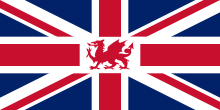
One suggested redesign of the Union Jack with the red dragon from the flag of Wales added in the centre
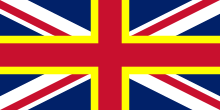
Another suggestion on incorporating Wales into the Union Jack, with the white backdrop on the St George's Cross being replaced with the yellow from the Flag of St David
In November 2007 the then culture minister Margaret Hodge said she would consider a redesign of the Union Flag to incorporate the Welsh dragon, during a debate in the House of Commons on the frequency with which the flag flies above public buildings. The issue was initially raised by Ian Lucas, another Labour MP, who complained that the flag introduced in 1606 following the accession of James VI of Scotland to the English throne as James I assumed the Welsh population as English under the bracket of England and Wales (represented by the cross of St George) which he then combined with the saltire of St Andrew which represented the union of England and Scotland. This principle continued in 1801 when the St Patrick cross was incorporated following the Union with Ireland Act 1800. Lucas claimed the identity of Wales had been suppressed ever since the Laws in Wales Acts 1535–1542. In the debate, Albert Owen MP said that "we in Wales do not feel part of the union flag because the dragon or the cross of St David is not on it."[20] Conservative MP Stewart Jackson described the comments as "eccentric".[21]
Northern Ireland
In Northern Ireland, the Union Flag is flown from buildings of the Northern Ireland Office as decreed by Regulations published in 2000.[22] The Regulations were amended in 2002 to remove the requirement to fly the flag on the birthdays of Queen Elizabeth, the Queen Mother and Princess Margaret, Countess of Snowdon who both died that year.[23] The current flag days are now the same as the United Kingdom government days noted above with the exception of the Duchess of Cornwall's birthday, which was only added to the UK flag days after her wedding to the Prince of Wales in 2005, and has not yet been extended to Northern Ireland.
The Police Service of Northern Ireland is the only body in the United Kingdom that is not permitted to fly the Union Flag, and is only permitted to fly its service flag or the Royal Standard in the event of a visit by the Sovereign.[24]
Scottish independence
As of 2013, numerous proposals were made about how the Union Flag might be altered to create a flag for the union of England, Wales and Northern Ireland after possible Scottish independence.[25] The College of Arms stated that there would be no need to change the flag in those circumstances, and the existing flag could continue to be used if desired.[26] Regarding the removal of Scottish heraldic features from the Union Flag, the Court of the Lord Lyon stated in 2012 that "[that] would be speculation at this stage, and we could only cross that bridge if we came to it."[27]
Construction sheets
-

ratio 1:2
-
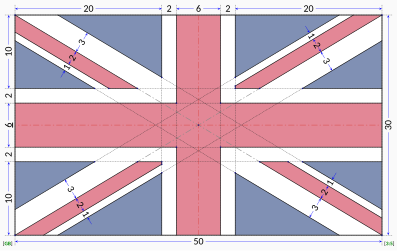
ratio 3:5
See also
- Commonwealth's flags
- Historical flags of the British Empire and the overseas territories
- List of United Kingdom flags – a list of flags used within the United Kingdom, the Crown Dependencies and the British overseas territories.
- List of English flags – a list of flags used within England
- List of Cornish flags – a list of flags used within Cornwall
- List of Northern Irish flags – a list of flags used within Northern Ireland
- List of Scottish flags – a list of flags used within Scotland
- List of Welsh flags – a list of flags used within Wales
- List of English flags – a list of flags used within England
- List of Irish flags – a list of flags used within the Republic of Ireland
- National colours of the United Kingdom
- Protectorate Jack
References
- ^ The Flag Institute: "It is often stated that the Union Flag should only be described as the Union Jack when flown in the bows of a warship, but this is a relatively recent idea. From early in its life the Admiralty itself frequently referred to the flag as the Union Jack, whatever its use, and in 1902 an Admiralty Circular announced that Their Lordships had decided that either name could be used officially. Such use was given Parliamentary approval in 1908 when it was stated that 'the Union Jack should be regarded as the National flag'."
- ^ United Kingdom, flag of the, for flag ratio see flag caption
- ^ A.C. Fox-Davies, The Art of Heraldry: An Encyclopædia of Armory (1904, reprinted 1986, ISBN 0-906223-34-2), p. 399: "By the King: Whereas, some differences hath arisen between Our subjects of South and North Britaine travelling by Seas, about the bearing of their Flagges: For the avoiding of all contentions hereafter. We have, with the advice of our Council, ordered: That from henceforth all our Subjects of this Isle and Kingdome of Great Britaine, and all our members thereof, shall beare in their main-toppe the Red Crosse, commonly called St George's Crosse, and the White Crosse, commonly called St Andrew's Crosse, joyned together according to the forme made by our heralds, and sent by Us to our Admerall to be published to our Subjects: and in their fore-toppe our Subjects of South Britaine shall weare the Red Crosse onely as they were wont, and our Subjects of North Britaine in their fore-toppe the White Crosse onely as they were accustomed"|James VI and I|Orders in Council; Official creation of the Union Flag – 1606."
- ^ Max Cryer, Curious English Words and Phrases: The Truth Behind the Expressions We Use (2012), p. 395: "When Britain's official flag settled down in 1801, its exact design and colouring were meticulously written out by Order of Council which described it as 'the Union Flag'... The correct formal wording of the Order of Council, 1801, was..." &c.
- ^ "Union Flag: Specification". The Flag Institute . Retrieved 7 August 2021.
- ^ a b c Department for Culture, Media and Sport: Flag Flying
- ^ a b The Governance of Britain, for flying the Union Flag, see pp. 57–58
- ^ Matthew Tempest and agencies Paisley to stand down as MEP, The Guardian, 19 January 2004. "After receiving almost 30% of the overall Northern Ireland vote in the 1979 European election, Ian Paisley became the first MEP to speak in the parliament when he protested that the Union Flag was flying upside down."
- ^ Defence Secretary apologises for flag blunder BBC News, 13 November 1997
- ^ FAQ Archived 16 October 2008 at the Wayback Machine Department for Culture, Media and Sport
- ^ FAQ: What is half mast? Archived 16 October 2008 at the Wayback Machine Department for Culture, Media and Sport
- ^ Morning Press Briefing Archived 9 August 2007 at the Wayback Machine by Prime Minister's Spokesman, 6 July 2007
- ^ Union flag already flying all year round The Daily Telegraph 7 July 2007
- ^ Brown lifts ban on national flag BBC News, 6 July 2007
- ^ Brown flies flag for Britain The Guardian 6 July 2007
- ^ "Union Jack will fly over No 10 permanently 'to show values'". The Times 6 July 2007
- ^ "Gordon orders Whitehall to fly the flag in boost for Britishness" Archived 19 August 2009 at the Wayback Machine Evening Standard 6 July 2007
- ^ Dates for flying the Union Flag on UK government buildings in 2020. Gov.uk. Published 27 February 2013. Updated 22 January 2020. Retrieved 29 September 2020.
- ^ "Royal and ceremonial" Scottish Government
- ^ Wintour, Patrick (28 November 2007). "Minister proposes a redesign for the union flag", The Guardian
- ^ Cleland, Gary (27 November 2007). "Union Jack should include Welsh flag, says MP", Daily Telegraph
- ^ "The Flags Regulations (Northern Ireland) 2000". Opsi.gov.uk. Retrieved 14 June 2010.
- ^ "The Flags Regulations (Northern Ireland) (Amendment) 2002". Opsi.gov.uk. Retrieved 14 June 2010.
- ^ "Police Emblems and Flags Regulations (Northern Ireland) 2002". Opsi.gov.uk. Retrieved 14 June 2010.
- ^ Sam Judah (4 December 2013). "What would the union jack look like if the Scottish bit was removed?". BBC News.
- ^ "Union Flag: What happens if Scotland wins independence?". ITV News. 27 November 2013.
- ^ "Would the blue have to be taken out of Union flag if Scotland became independent?". Daily Record. 7 June 2012.
External links
Source: https://en.wikipedia.org/wiki/Flag_of_the_United_Kingdom
0 Response to "United Kingdoms Flag United Kingdoms Flag Easy"
Post a Comment